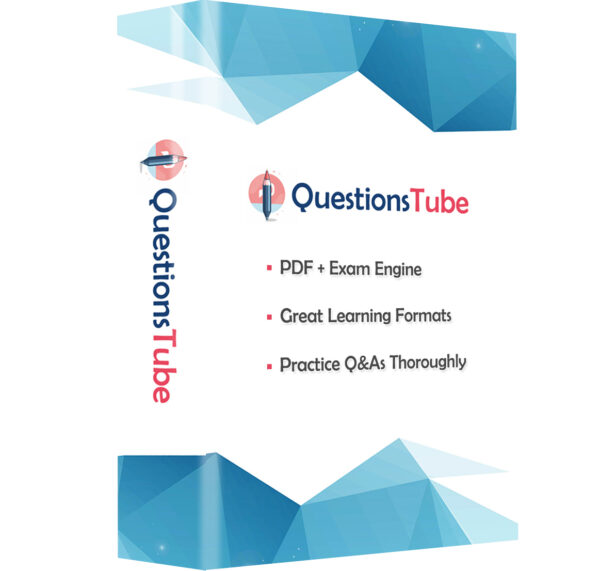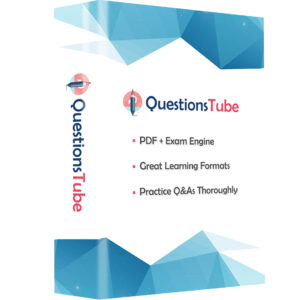Order our SC-400 Practice Questions Today and Get Ready to Pass with Flying Colors!
Go To test SC-400 Free Questions
Product Description
Introduce Microsoft SC-400 Exam
The Microsoft Information Protection Administrator SC-400 exam is the part of the requirements for Microsoft Certified: Information Protection Administrator Associate certification. To be Microsoft information protection administrators, you can plan and implement controls that meet organizational information protection and governance requirements by using Microsoft 365 information protection services. The Microsoft SC-400 exam is available in multiple languages, including German, English, Spanish, French, Italian, Japanese, Korean, Portuguese (Brazil), Chinese (Simplified), Chinese (Traditional). Make sure that you can pass the SC-400 exam and earn the Microsoft Certified: Information Protection Administrator Associate certification to promote your positions.
Learning SC-400 Exam Objectives Is Strongly Recommended
- Identify sensitive information requirements for an organization’s data
- Translate sensitive information requirements into built-in or custom sensitive info types
- Create and manage custom sensitive info types
- Create and manage exact data match (EDM) classifiers
- Implement document fingerprinting
- Identify when to use trainable classifiers
- Design and create a trainable classifier
- Test a trainable classifier
- Retrain a trainable classifier
- Implement roles and permissions for administering sensitivity labels
- Define and create sensitivity labels
- Configure and manage sensitivity label policies
- Configure auto-labeling policies for sensitivity labels
- Monitor data classification and label usage by using Content explorer, Activity explorer, and audit search
- Apply bulk classification to on-premises data by using the Microsoft Purview Information Protection scanner
- Manage protection settings and marking for applied sensitivity labels
- Design an email encryption solution based on methods available in Microsoft 365
- Implement Microsoft Purview Message Encryption
- Implement Microsoft Purview Advanced Message Encryption
- Design DLP policies based on an organization’s requirements
- Configure permissions for DLP
- Create and manage DLP policies
- Interpret policy and rule precedence in DLP
- Configure a Microsoft Defender for Cloud Apps file policy to use DLP policies
- Implement and monitor Endpoint DLP
- Configure advanced DLP rules for devices in DLP policies
- Configure Endpoint DLP settings
- Recommend a deployment method for device onboarding
- Identify endpoint requirements for device onboarding
- Monitor endpoint activities
- Implement the Microsoft Purview Extension
- Analyze DLP reports
- Analyze DLP activities by using Activity explorer
- Remediate DLP alerts in the Microsoft Purview compliance portal
- Remediate DLP alerts generated by Defender for Cloud Apps
- Plan for information retention and disposition by using retention labels
- Create retention labels for data lifecycle management
- Configure and manage adaptive scopes
- Configure a retention label policy to publish labels
- Configure a retention label policy to auto-apply labels
- Interpret the results of policy precedence, including using Policy lookup
- Manage data retention in Microsoft 365 workloads
- Create and apply retention policies for SharePoint Online and OneDrive
- Create and apply retention policies for Microsoft 365 groups
- Create and apply retention policies for Teams
- Create and apply retention policies for Yammer
- Create and apply retention policies for Exchange Online
- Apply mailbox holds in Exchange Online
- Implement Exchange Online archiving policies
- Configure preservation locks for retention policies and retention label policies
- Recover retained content in Microsoft 365
- Create and configure retention labels for records management
- Manage retention labels by using a file plan, including file plan descriptors
- Classify records by using retention labels and retention label policies
- Manage event-based retention
- Manage the disposition of content in records management
- Configure records management settings, including retention label settings and disposition settings
- Plan for regulatory compliance in Microsoft 365
- Create and manage assessments
- Create and modify custom templates
- Interpret and manage improvement actions
- Create and manage alert policies for assessments
- Choose between eDiscovery (Standard) and eDiscovery (Premium) based on an organization’s requirements
- Plan and implement eDiscovery
- Delegate permissions to use eDiscovery and Content search
- Perform searches and respond to results from eDiscovery
- Manage eDiscovery cases
- Perform searches by using Content search
- Choose between Audit (Standard) and Audit (Premium) based on an organization’s requirements
- Plan for and configure auditing
- Investigate activities by using the unified audit log
- Review and interpret compliance reports and dashboards
- Configure alert policies
- Configure audit retention policies
- Plan for communication compliance
- Create and manage communication compliance policies
- Investigate and remediate communication compliance alerts and reports
- Plan for insider risk management
- Create and manage insider risk management policies
- Investigate and remediate insider risk activities, alerts, and reports
- Manage insider risk cases
- Manage forensic evidence settings
- Manage notice templates
- Plan for IBs
- Create and manage IB segments and policies
- Configure Teams, SharePoint Online, and OneDrive to enforce IBs, including setting barrier modes
- Investigate issues with IB policies
- Configure and maintain privacy risk management
- Create and manage Privacy Risk Management policies
- Identify and monitor potential risks involving personal data
- Evaluate and remediate alerts and issues
- Implement and manage subject rights requests
How can you prepare for the SC-400 exam well? One of the best ways is to use SC-400 practice questions of QuestionsTube.
Our SC-400 Practice Questions include:
– SC-400 exam questions and answers: These are the most updated and accurate questions and answers that reflect the real exam content and format. You can practice them online or offline and check your answers with detailed explanations.
– SC-400 exam questions pdf: It is the most valid and effective pdf file that contains the actual exam questions and answers. You can download it and use to read all the questions and answers anytime and anywhere.
– SC-400 ICE exam engine: This is a powerful tool that simulates the real exam environment and allows you to test your knowledge and skills under time pressure. You can customize your exam mode, difficulty level, question type, and number of questions.
– SC-400 free update: This is a great advantage of QuestionsTube’s SC-400 exam questions. You can choose the free update privilege to make sure that you will always have the latest study materials in a valid period.
By using our SC-400 exam materials, you can:
– Save your time and money: You don’t need to spend hours searching for other sources or paying for expensive courses or books. Our SC-400 exam materials are enough to prepare you for the exam.
– Enhance your confidence and performance: You can familiarize yourself with the exam format and content and improve your speed and accuracy. You can also identify your strengths and weaknesses, and work on them accordingly.
– Guarantee your success: We have a high pass rate and a full refund policy. If you use our SC-400 exam materials and fail the exam, we will refund your money without any hassle.










Reviews
There are no reviews yet.